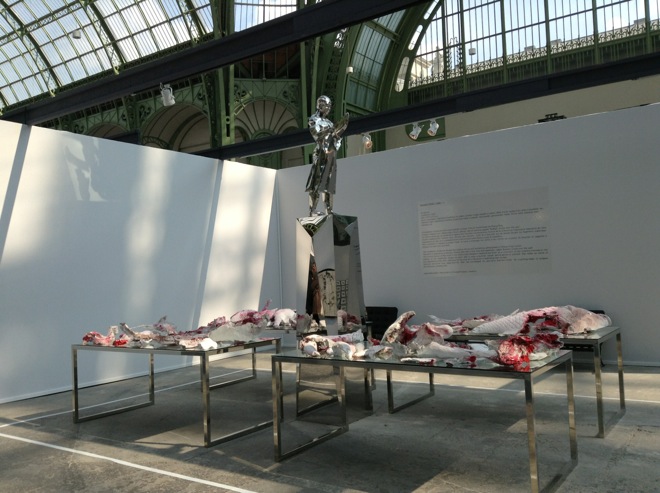2014 marks the 50th anniversary of diplomatic relations between France and the People’s Republic of China. While the Chinese president Xu Jinping visited France, Art Paris held its five-day art fair, with China as the “guest of honor” for the first time; the fair closed on March 30 with a total attendance of over 58 000 visitors. Yet aside from the buzz and updates on the opening day, buyers showed a more even composure during the remainder of the fair. Except for a few galleries with remarkable results, not a few gallerists felt sales were just “passable.” Galerie Claude Bernard, an old Parisian gallery founded in 1953, showed ink paintings by Gao Xingjian, the Nobel laureate in literature; the booth was sold out on the opening night—“half to old clients, and the other half to new clients.” Ifa gallery, from Shanghai and Brussels, also sold three ink pieces by Jiang Shanqing and a large photography by the Gao Brothers, while m97 from Shanghai also moved twenty or so photographic works. Elsewhere, Xin Dong Cheng from Beijing also had multiple transactions; Cheng indicated that at least the exhibition costs had been taken care of.
Most of the ten Chinese galleries in Art Paris this year—including Blindspot from Hong Kong, m97 from Shanghai and On Gallery from Beijing—were present in France for the first time. 10 Chancery Lane Gallery from Hong Kong was attending the fair for the fifth time; the director, Katie de Tilly, stressed that exhibiting in France was very important: “France is Europe, so you can meet collectors coming from France, Switzerland, Holland, Germany, Belgium and other countries.” She indicated that Parisian audiences were relatively more conservative, but that they still showed a great interest in Chinese artists. The actual sales conditions depended on the overall economic outlook: “The economy is not great in France, that’s for sure, but there are some benefits for taxes and inheritance, so hopefully all this will balance out somewhere.”
Although Art Paris had already announced last year that China would be the guest of honor, and despite a year of work and offering Chinese galleries a 20% discount on the booths, still only eight Chinese galleries were present in the “China Platform” zone in the heart of the Grand Palais (the other two Chinese galleries were mixed in with other young galleries in the “Promises” section)—certainly not an eye-catching number. The question of timing must have been one reason Art Paris did not attracted more galleries from China. Earlier this year, in late February/early March, Art14 was held in London, with over ten galleries from China (along with five from Taiwan and two from Singapore). Early March also saw “Focus China” at the Armory in New York. With the influence and connections of Philip Tinari, the director of UCCA in Beijing, sixteen Chinese galleries were invited, along with funding support from Hong Kong’s K11 Foundation, which hosted eight rounds of discussions on contemporary Chinese art over two days. Thus Art Paris was the last act in a month of “focus” on Chinese galleries—and of course, the vast majority of galleries could only choose to attend one or, at most, two art fairs. In spite of all this, one key difference distinguished Art Paris from the Armory in New York: echoing the Chinese theme, quite a few galleries in the general section showed Chinese artists—or else works by Western artists dealing with themes connected to China. Guillaume Piens, the artistic director, stated that up to 33 galleries showed works that were in some way or another connected to China. So the “China theme” was not isolated, but permeated different corners of the fair.

巴黎Hélène Bailly画廊与上海香格纳画廊合作,展出张鼎大型装置《佛跳墙》,标价7万欧元

巴黎北京画廊代理艺术家李暐在现场进行行為表演。

上海艺法画廊展出戴光郁的装置和摄影作品。